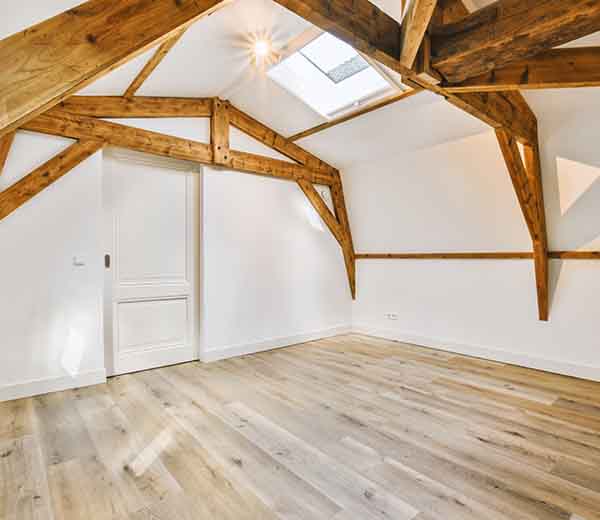
Basement Waterproofing Services
Basement waterproofing is essential for maintaining the structural integrity and longevity of any building. A wet or damp basement can lead to various problems, including mold growth, structural damage, and poor indoor air quality. Effective waterproofing solutions can prevent these issues and ensure a dry, healthy living environment. This comprehensive guide covers the different types of basement waterproofing services, focusing on internal and external methods, and explores their advantages.
Understanding Basement Waterproofing
Basement waterproofing involves using various techniques and materials to prevent water from entering a basement or a crawl space. It typically involves managing water from the outside (external waterproofing) and addressing water that has already entered (internal waterproofing). Both methods are crucial for a complete waterproofing strategy. Internal methods are generally used to manage moisture that penetrates the basement, while external methods focus on preventing water from entering the basement in the first place. Both approaches provide a comprehensive solution to ensure a dry and safe basement environment, essential for maintaining the building’s overall health and stability.

Internal Basement Waterproofing
Internal basement waterproofing, also known as negative side waterproofing, involves managing water that has already penetrated the basement walls or floor. This method does not stop water from entering but controls and redirects it to prevent damage. Here are some common internal waterproofing techniques:
1. Interior Sealants
Interior sealants are often the first line of defense in internal waterproofing. These sealants, usually in the form of coatings or paints, are applied to the basement walls and floors. They penetrate the concrete, creating a waterproof barrier that blocks moisture. While effective for minor dampness, they are not suitable for significant water intrusion. Interior sealants are best used in conjunction with other methods for a more comprehensive approach. They are typically easy to apply and cost-effective, making them a popular choice for homeowners looking to address minor moisture issues and improve the overall condition of their basement.
2. Waterproof Membranes
Waterproof membranes are more robust than sealants and are applied to the interior surfaces of the basement. These membranes are designed to withstand greater water pressure and provide a more durable solution. They can be combined with other internal waterproofing methods for enhanced protection. Waterproof membranes come in various forms, including sheet membranes and liquid-applied membranes, which are spread over the surface and allowed to cure. They offer long-term protection against moisture penetration and can be an effective solution for basements that experience moderate to severe water infiltration, ensuring the area remains dry and usable.
3. Interior Drainage Systems
Interior drainage systems are designed to collect and channel water away from the basement. One common method is installing a French drain system along the perimeter of the basement floor. Water entering the basement is directed into the drainage system, which then channels it to a sump pump. The sump pump removes the water from the basement, preventing flooding and water damage. These systems are highly effective in managing groundwater and preventing water from accumulating inside the basement. Regular maintenance and inspection of the drainage system are essential to ensure its continued efficiency and prevent potential water damage.
External Basement Waterproofing
External basement waterproofing, also known as positive side waterproofing, involves preventing water from entering the basement in the first place. This method addresses the root cause of water intrusion by managing water around the foundation. Here are some common external waterproofing techniques:
1. Excavation and Waterproofing
This method involves excavating the soil around the foundation to expose the basement walls. Once exposed, the walls are cleaned and inspected for cracks or damage. Waterproof coatings or membranes are then applied to the exterior surface of the walls. These materials form a barrier that prevents water from penetrating the foundation. After applying the waterproofing material, the soil is backfilled. Excavation and waterproofing are highly effective in addressing significant water intrusion issues. This method provides a comprehensive solution by stopping water at its source, ensuring the basement remains dry and protected from external moisture.
2. Exterior Drainage Systems
Exterior drainage systems, such as French drains, are installed around the perimeter of the building to divert water away from the foundation. These systems consist of perforated pipes placed in trenches filled with gravel. Water entering the trench is collected by the pipes and directed away from the building, reducing hydrostatic pressure on the foundation walls. This method is highly effective in managing surface and groundwater, preventing it from accumulating around the foundation. Regular maintenance, including ensuring the pipes are free from clogs and the trenches remain intact, is essential for the drainage system’s continued efficiency and effectiveness.
3. Grading and Landscaping
Proper grading and landscaping around the building can significantly impact water management. Ensuring that the ground slopes away from the foundation helps prevent water from pooling around the basement walls. Landscaping features like swales and retaining walls can also be used to manage water flow and protect the foundation. This method is a cost-effective way to enhance the effectiveness of other waterproofing techniques. Proper grading and landscaping not only prevent water intrusion but also enhance the property’s aesthetics and functionality. Regular inspection and maintenance of the landscaping features ensure they continue to perform their water management roles effectively.
Advantages of Basement Waterproofing
Investing in basement waterproofing offers numerous benefits, making it a crucial aspect of building maintenance. Here are some key advantages:
1. Prevents Structural Damage
Water infiltration can weaken the foundation and structure of a building over time. By waterproofing the basement, you prevent water from entering and causing damage to the concrete and other structural elements. This helps maintain the integrity and stability of the building. Waterproofing provides a protective barrier that shields the foundation from moisture, reducing the risk of cracks and other structural issues. This investment in the building’s structural health ensures its longevity and durability, safeguarding it against potential water-related damages.
2. Reduces Mold and Mildew Growth
A damp basement is an ideal environment for mold and mildew to thrive. These fungi can cause health issues, including respiratory problems and allergies. Waterproofing keeps the basement dry, reducing the risk of mold and mildew growth and promoting a healthier indoor environment. By preventing moisture buildup, waterproofing eliminates the conditions that favor mold growth, ensuring a clean and safe living space. This is particularly important for maintaining good indoor air quality and preventing health problems associated with mold exposure, creating a healthier home environment.
3. Improves Indoor Air Quality
Water in the basement can lead to high humidity levels, which negatively impact indoor air quality. By waterproofing the basement, you control humidity and prevent musty odors, creating a more comfortable living space with improved air quality. A dry basement contributes to a healthier overall home environment by reducing the likelihood of mold and mildew growth. Improved air quality enhances comfort and health, making the living space more enjoyable. Regular monitoring and maintenance of the waterproofing systems ensure that the air quality remains optimal, contributing to the overall well-being of the occupants.
4. Increases Property Value
A waterproofed basement is an attractive feature for potential buyers. It indicates that the property has been well-maintained and is less likely to suffer from water-related issues. This can increase the property’s market value and make it more appealing to prospective buyers. A dry, functional basement adds usable space to the home, making it more versatile and valuable. This investment in waterproofing not only protects the property but also enhances its marketability, providing a good return on investment. It ensures the property remains in good condition, appealing to buyers looking for well-maintained homes.
5. Provides Additional Living Space
A dry, waterproofed basement can be transformed into functional living space, such as a recreation room, home office, or additional bedroom. This maximizes the usable area of the home and enhances its overall functionality and appeal. Waterproofing ensures that the basement remains dry and comfortable, suitable for various uses. This additional space can be customized to meet the homeowners’ needs, providing extra room for family activities, work, or guests. The transformation of the basement into a functional living area enhances the home’s value and usability, making it more versatile and attractive.
6. Protects Personal Belongings
Many homeowners use their basements for storage. Waterproofing ensures that personal belongings, including valuable items, documents, and memorabilia, are protected from water damage. This provides peace of mind and safeguards your possessions. A waterproofed basement offers a secure and dry storage environment, reducing the risk of damage to stored items. This protection is crucial for preserving the condition and value of personal belongings, especially items with sentimental or monetary value. Ensuring the basement remains dry and safe for storage enhances its functionality and provides a secure space for valuable items.


